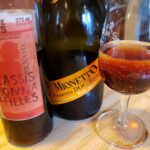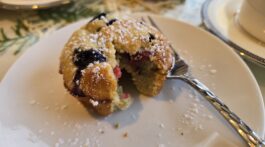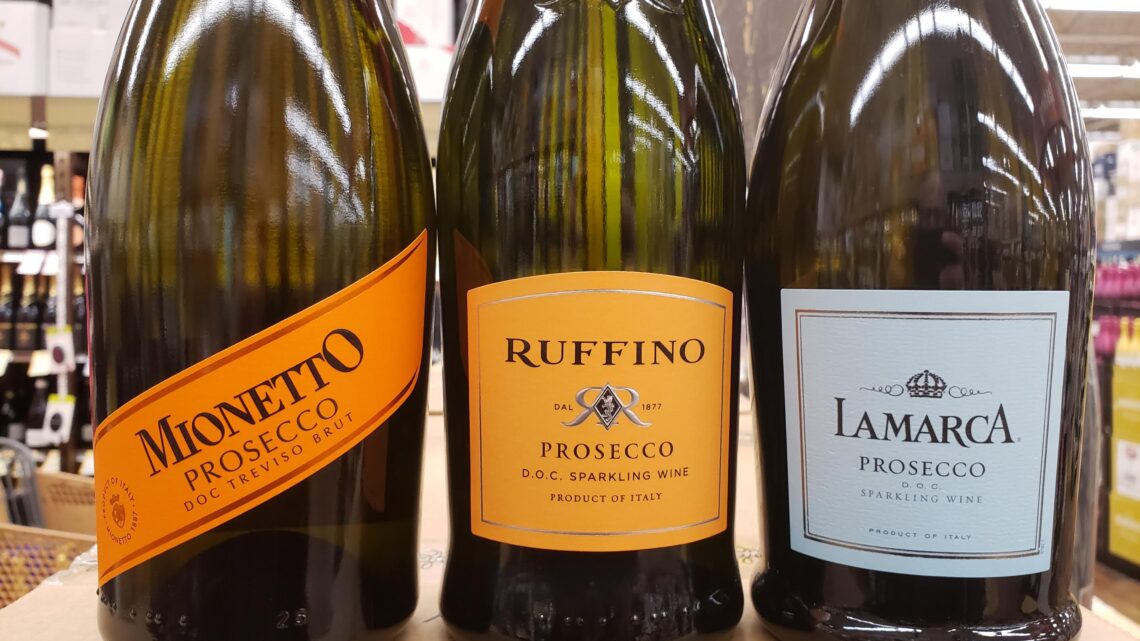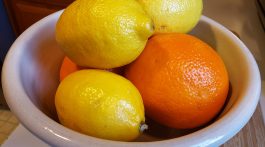Breakout the Brunch Bubbly
By Frank Whitman
 Now that the football season is finished, brunch is the big weekend game. Out at a cozy restaurant or gathering at home, a lazy mid-day meal – not breakfast, but not lunch either – is a good way to spend cold-weather Sundays.
Now that the football season is finished, brunch is the big weekend game. Out at a cozy restaurant or gathering at home, a lazy mid-day meal – not breakfast, but not lunch either – is a good way to spend cold-weather Sundays.
A bubbly wine, straight up or mixed in a drink, is what separates brunch from lunch – that and some eggy dishes and sweet pastries. (More on them another time.)
In the early days, restaurant brunches were universally known as Champagne Brunch, even though the wine was never genuine Champagne. Sweetish, fizzy wine was the order of the day, and it was a surprisingly good fit with a hearty breakfast-oriented menu.
 Prosecco soon moved in, creating a bonanza for the Italian wine industry. With provenance and a great origin story, it’s not imitation anything, but instead a real wine – lively and crisp with delicate fruit and floral character.
Prosecco soon moved in, creating a bonanza for the Italian wine industry. With provenance and a great origin story, it’s not imitation anything, but instead a real wine – lively and crisp with delicate fruit and floral character.
From an area in the northeast of Italy with the Veneto at its heart, Prosecco is made from the Glera grape. Industrial production methods keep the price much more reasonable than Champagne.
Simply served in its festive glory or mixed in a cocktail, Prosecco is a favorite wine for brunch. There are, of course, the large production bottlings with colorful labels – light blue, orange, or yellow – calling for attention. Each has their own personality and fans. Gather some friends and give them a try to see which ones fit your style. It’s a fun project. There are also a growing number of small-production examples with
more nuance and individual character.
But the world of sparkling wine has expanded globally with other up-and-coming sparklers vying for attention at brunch.
The Spanish are proud of their Cava. Germany makes seldom-seen but delicious Sekt. In France, Alsace, the Loire Valley and even Burgundy all make sparkling wine called Crémant – not Champagne, but definitely French. In fact, almost any winemaking region produces some sparkling wines.
JoAnn LoGiurato at Stew Leonard’s Wines in Norwalk recommends the dry and crisp Bailly Lapierre, Crémant d’ Bourgogne ($19). She also likes two Cavas from Spain: Bohigas Brut Cava ($17) and Raventos ($20). Codey Foster at Ancona’s in Wilton likes Bisson Glera ($20), a lightly sparkling Italian wine that is “gorgeous white wine that also happens to have bubbles.”
 Willm Crémant d’Alsace Brut Rosé ($20) is a favorite of Charles Denninger at DB Fine Wines in New Canaan. It’s a 90 point “Fresh and fruity” sparkler with a beautiful color. He also favors Victorine De Chastenay – Crémant De Bourgogne ($20) for its combination of excellent quality and remarkable value.
Willm Crémant d’Alsace Brut Rosé ($20) is a favorite of Charles Denninger at DB Fine Wines in New Canaan. It’s a 90 point “Fresh and fruity” sparkler with a beautiful color. He also favors Victorine De Chastenay – Crémant De Bourgogne ($20) for its combination of excellent quality and remarkable value.
But the sparklers, Prosecco or otherwise, also make delicious cocktails particularly suited to brunch.
The Mimosa is the best known. I like to swirl a splash of Triple Sec orange liqueur in the glass, fill it halfway with the wine and then watch the orange juice cascade down as I pour. Fresh-squeezed juice takes it to a whole new level.
 An Aperol Spritz is a welcome newcomer to the brunch scene. The colorful mix of Prosecco and Aperol (a bitter, bright red Italian apéritif) creates a refreshing balance of sweet and tangy with a beautiful color. It’s JoAnn’s go-to for brunch.
An Aperol Spritz is a welcome newcomer to the brunch scene. The colorful mix of Prosecco and Aperol (a bitter, bright red Italian apéritif) creates a refreshing balance of sweet and tangy with a beautiful color. It’s JoAnn’s go-to for brunch.
Originating at Harry’s Bar in Venice, the Bellini is a brunch classic. Sparkling wine and peach nectar is a match made in heaven. It’s a simple blend of Peach Nectar (Goya makes a good one) and sparkling wine. Just like the Mimosa, a swirl of peach brandy boosts the flavor. Denninger recommends a ready-to-drink bottling: Cipriani Bellini ($18).
 The Kir Royal is another brunchy blend of fruit and sparkling wine. A half ounce of crème de cassis (blackcurrant liqueur) topped with a dry sparkling wine is refreshing and has a lovely color. Use Chambord (raspberry liqueur) and call it a Kir Imperial for another delicious take.
The Kir Royal is another brunchy blend of fruit and sparkling wine. A half ounce of crème de cassis (blackcurrant liqueur) topped with a dry sparkling wine is refreshing and has a lovely color. Use Chambord (raspberry liqueur) and call it a Kir Imperial for another delicious take.
For something more boozy, JoAnn suggests a French 75, rumored to be named after the French 75mm gun from WWII. A mix of sparkling wine with gin, simple syrup and lemon juice, the trick is to get the balance right so you have a hint of gin and the drink is tart, not sour.
There is still plenty of winter left to explore the brunchy world of sparkling wine. Why not try a different bottle each weekend till the crocus pop up?














No Comment